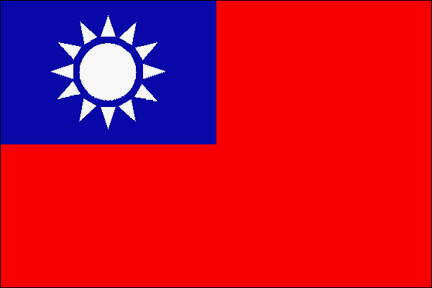





Taiwan does not possess nuclear weapons.Since 1988, Taiwanese leaders have maintained the position that Taiwan will not seek nuclear weapons in the future. However, Taiwan has made attempts to organize production of plutonium on an experimental basis. Imported nuclear technologies, knowledge, and equipment have not enabled Taiwan to create nuclear weapons, but have provided the necessary basis for work in the nuclear field and may accelerate nuclear weapons development, if such a decision is made. However, a decision to launch a nuclear weapons program is unlikely given the likely diplomatic pressure from the United States and threats from the People’s Republic of China resulting from any potential Taiwanese nuclear weapons program. Taiwan is a member of the Nuclear Non-Proliferation Treaty (NPT). To increase transparency, Taiwan is implementing the International Atomic Energy Agency's (IAEA) new, more effective safeguards, known as "Program 93+2." Taiwan’s participation in the 93+2 program is tied into the ongoing Taiwanese sovereignty issue between Taiwan and the People’s Republic of China.The reestablishment of National Tsinghua University in Taiwan in 1956 led to the construction of the nation's first research nuclear reactor and beginning of the training of atomic energy specialists. More than a decade later, the Taiwan Power Company established a nuclear energy department and laid plans for a nuclear power plant. Thereafter, the Atomic Energy Council and the Nuclear Energy Research Institute were established, and the development of nuclear energy gradually progressed to the stage of large reactors used for the generation of power.
Taiwan launched a nuclear weapons program after the first Chinese nuclear test in October 1964. The military's Chungshan Institute of Science and Technology developed the "Hsin Chu Program" which included the purchase of a heavy-water reactor, a heavy-water production plant, and a plutonium separation plant.
The Institute of Nuclear Energy Research (INER) is the Taiwan's sole institution dedicated to nuclear research. It was established in 1965 at the same site as the Chungshan Institute, some 43 kilometers southwest of Taipei, inside a shared security perimeter.
Construction of the "Taiwan Research Reactor" (TRR) at INER began in September 1969, and the reactor began operating in April 1973. The 40-megawatt-thermal, natural-uranium heavy-water moderated research reactor, supplied by Canada, was the same model that India used to produce plutonium for its first nuclear explosion in 1974. The TRR continued in operation until 1988.
By 1974 the US Central Intelligence Agency concluded that "Taipei conducts its small nuclear program with a weapon option clearly in mind, and it will be in a position to fabricate a nuclear device after five years or so."
By 1985 INER had a staff of over 1,100 people. The Institute has contemporary scientific equipment, a research reactor, and laboratories in which development work is done in the area of the production of nuclear fuel and the study of the technology for radiochemical processing of irradiated uranium. This institution received approximately NT $500 million in funding for FY 1998, and was in charge of 600 personnel performing research in the areas of nuclear safety, radiation protection, nuclear waste management, isotope applications and other nuclear technology development and dissemination.
A research reactor improvement plan is currently being implemented. The current improvement plan proposes to remove this reactor's old heavy water core and replace it with a domestically designed light water, low enrichment uranium core. The renovated reactor, named TRR-II, will generate high quality neutron beams used in diffraction and scattering experiments. In addition, the reactor will be used for the production of isotopes and for experiments on the water chemistry of the reactor core and irradiation tests of nuclear fuel and materials. Academic users will be encouraged to take advantage of similar facilities overseas, and to use the low power research reactor at National Tsing-Hua University to develop new and improved technologies for the future use of TRR-II.Developed atomic power engineering has been created in the country with the technical assistance of American and Western European states. By the mid-1980's, there were already six nuclear power units with a total capacity of 4,900 megawatts operating in Taiwan, with another two under construction. As of 2000, the nation's first nuclear power plant was approaching its second ten-year license renewal, and the focus of research efforts over the next few years was to prevent the plant from deteriorating and extend the plant service life.
Taiwan does not have its own natural reserves of nuclear raw materials and actively cooperates with other countries in searching for and exploring uranium deposits. A five-year agreement between a Taiwanese and an American firm on joint development of uranium ore in the United States was signed in 1985. That same year a contract was signed with the Republic of South Africa for a 10-year supply of uranium from that country.
Apart from power generation, nuclear energy technology is also widely used in Taiwan for medical purposes. In addition to the medium-sized cyclotron and medical isotope and nuclear material extraction facilities constructed by the Nuclear Energy Research Institute, major hospitals and medical centers have established radiation medicine, tumor therapy and nuclear medicine departments. Among these, Veterans General Hospital in Taipei has set up a small cyclotron to produce short half-life radioactive isotopes for medical purposes.
